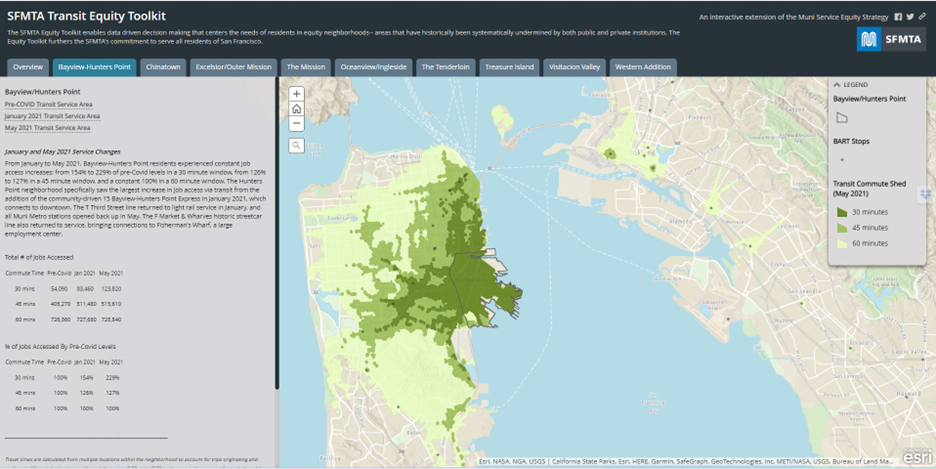- August 26, 2019
- Transportation
This post originally appeared on Stephen Goldsmith's Better, Faster, Cheaper blog on Governing.com
Urban officials face complex and challenging tradeoffs around mobility issues. They do all they can to see that all residents possess reasonable and safe transportation options while concurrently managing traffic congestion and air pollution. For decades, unfortunately, cities also have embraced another goal: to protect incumbent transit providers even at the expense of underserved communities.
I came face to face with this protectionism in my time as New York City's deputy mayor for operations. During a bus strike, I suggested supplementing public transportation with every private option imaginable to assist hard-working outer borough residents. But laws designed to protect various providers from competition precluded each suggestion I made.
Not long after the strike ended, the introduction of Uber's and Lyft's services dramatically increased transit access, breaking through regulatory protectionism (while undoubtedly adding to traffic congestion).
Despite disruptions to urban mobility, cities remain stuck in a pattern of regulating each mode of transportation rather than reimagining their role as providers of integrated mobility as a service. They lack several key pieces necessary to properly price the value of curbs and streets, such as comprehensive data sharing from rideshare and micromobility services (subject to legitimate proprietary protections), more support to the underserved, and more flexibility for the capital budgets of buses and subways.
With almost cruel irony, recent business trends have shifted employer headquarters to city cores while expensive real estate markets have pushed employees out beyond the reach of public transportation. The status quo of vehicle size, outdated bus routes and suffocating federal regulations continues to impede the delivery of adequate mobility. Many transit providers have starved infrastructure repairs in order to cope with underfunded pensions. As a result, their services have become less dependable, pushing riders to take private vehicles during their morning rush. Accordingly, at the moment cities need public transit the most, many now witness historically low ridership.
That's the context for an effort to harness market forces to transportation needs that soon will unfold in New York City. With the strong support of Gov. Andrew Cuomo, the city recently won the state legislature's approval to implement congestion pricing for vehicles entering Manhattan's Central Business District, making it the first American city to try an approach that has become familiar to drivers in cities including London, Singapore and Stockholm. Unlike the caps and other restrictions that that have limited mobility solutions in the past (and, unfortunately, continue to evolve), Manhattan's congestion pricing would likely be enacted across all forms of private vehicles, nudging the market instead of protecting competitors, while devoting the new revenues to subways and other public transit needs.
The plan is to have a six-person board appointed by the Triborough Bridge and Tunnel Authority decide the pricing mechanism. Cuomo has recommended a flat daily fee of $11.52 for cars and $25.32 for trucks, along with surcharges for taxis and rideshare vehicles. But those contemplating how to charge for congestion should also think about the dynamic pricing options that technology has made available. Traffic demand fluctuates through the day and by area, and delivery trucks should be rewarded for off-hours and late-night use of curb space or double-parking lanes. One could also charge for vehicle miles traveled within the congestion zone, as opposed to simply charging for entry into that space. Such a pricing mechanism could reduce the unnecessary cruising of vehicles within the city (particularly by taxis and rideshare vehicles) and reward efficient travel patterns.
In addition to the proposed congestion charge, New York should reconsider its over-regulation of private bus companies. For years, these jitney services have provided a needed service to residents of the outer boroughs where public transit has provided inadequate connections. The solution to congestion is more than just getting cars off the road; it is also about improving the performance of more efficient means of transportation.
If New York's foray into congestion pricing ends up meeting its goals, it's likely that other cities will consider that approach along with other ways to get more efficiency out of their transportation networks. As transportation technologies change along with commuter habits, preferences and living patterns, so too will cities and states need to continue the balancing act among different transportation modes vying for dominance within a mobility ecosystem. We can only hope that they will avoid the mistakes of the past and continue to address transportation at the level of the market, not the mode.



 Stephen Goldsmith is the Derek Bok Professor of the Practice of Urban Policy at the Harvard Kennedy School and the
Stephen Goldsmith is the Derek Bok Professor of the Practice of Urban Policy at the Harvard Kennedy School and the 

